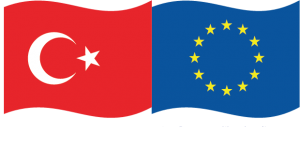England
Summary
The Via Francigena runs only through the county of Kent; Canterbury is the County Town. It begins at Canterbury cathedral and follows the North Downs Way National Trail to Dover, a distance of only 22 miles http://www.nationaltrail.co.uk/north-downs-way. Cyclists can use the first part of Eurovelo route no 5; there is a map on the website.
Detailed Description
England has a network of common-law footpaths and riding routes, all maintained by the regional authorities. In the last few years, several national trails have also been developed, and the route of the Via Francigena in England runs over one of these, the North Downs Way, which follows a line of chalk hills from Canterbury, the starting point of the route, to Dover, England’s closest point to France. http://www.nationaltrail.co.uk/north-downs-way
Canterbury cathedral is the headquarters of the Anglican Church, which in time expanded to Britain’s many colonies. It is in Canterbury town, a popular tourist destination with other religious buildings such as St Augustine’s Abbey, as well as the cathedral.
In 2001, the Via Francigena Kilometre Zero Stone was laid in the cathedral grounds to mark the start of the route to Rome.
History
Canterbury is the site of a great medieval cathedral and seat of the Archbishop of Canterbury, primate of the Church of England. At the time of Bishop Sigeric, the church in England was subordinate to the Church of Rome, so the archbishop had to be confirmed in office by the Pope. In 1534, due to disagreements with the Pope, Henry VIII declared himself head of the English church, which became independent, and from then was known as the Church of England. Many English monasteries were closed, and pilgrimage to Rome almost ceased. However, Canterbury continues to be the headquarters of the Anglican Church to this day.
Between the mid 14th and mid 16th C, Calais belonged to England and, with Dover, controlled the Straits of Dover, and the shipping through this narrow waterway. This was especially important for the Spanish, who had colonies in the Netherlands which they could only conveniently reach via the Straits of Dover.
Web sites for information and maps:
https://www.viefrancigene.org/en/ is the official site for the whole route of the Via Francigena. https://www.viefrancigene.org/en/resource/tour/la-francigena-inghilterra/ takes you directly to the section for England.
The alternative organization Association Internationale Via Francigena http://www.francigena-international.org/ has a website with its own resources.
Two pilgrimage sites give a listing of resources in various languages. – Jacobeo http://www.xacobeo.fr/ZE1.13.Fran.htm and Confraternity of St James http://www.csj.org.uk/via-francigena/











